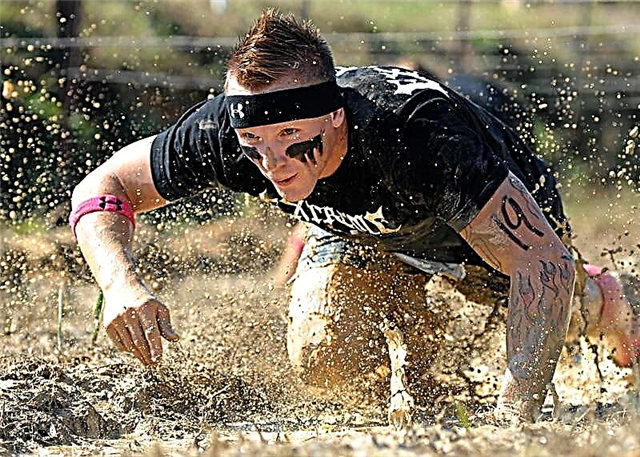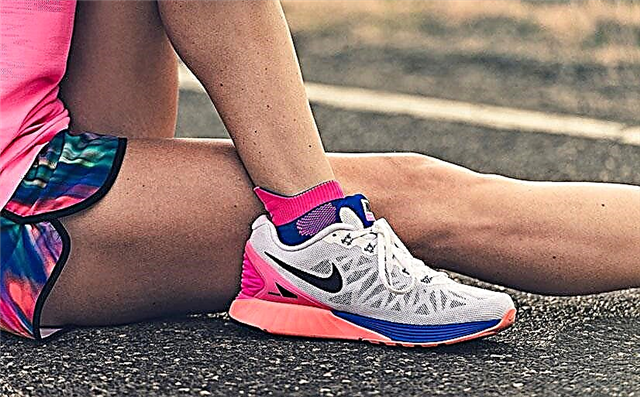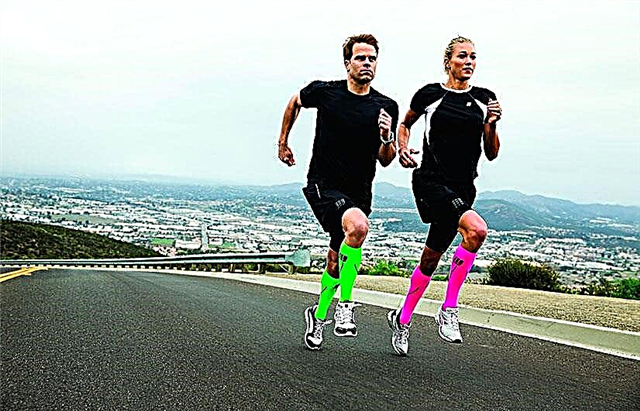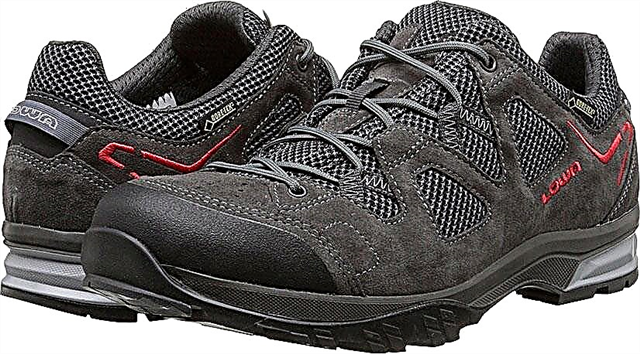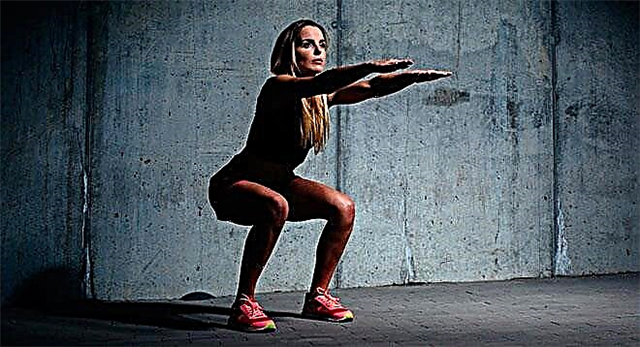In the new material, we will touch on the most important issue of modern athleticism, namely: is it possible to gain weight and dry at the same time? The opinions of endocrinologists, nutritionists, and trainers differ in this regard. There are both successful examples of simultaneous drying and gaining muscle mass, and unsuccessful ones. Let's dig a little deeper to understand this topic in as much detail as possible.
The answer to the question
Before reading all the following material, we will immediately give the answer: simultaneous gaining of muscle mass and drying is basically impossible for one simple reason that they are opposite processes.
Gaining muscle mass is an increase in the anabolic background, which stimulates super recovery in the body. While drying, especially the component that is responsible for fat burning, is an optimizing catabolic process, in most cases it is compulsory for athletes.
BUT this does not mean at all that these processes cannot be combined. For all these tweaks, there is a term such as macro- and microperiodization.

Macroperiodization and microperiodization
It all depends on the construction of nutritional and training complexes. A typical cycle includes macro periodization. What is its essence? It's pretty simple - one step forward, one step back. Then two steps forward - one step back. First, we all gain muscle mass, in parallel there is a set of glycogen stores and, alas, body fat.
With proper training and nutrition planning, recruitment goes as follows:
- 200-300 g of muscle mass. The set depends on the level of metabolism and the level of the hormone testosterone - a direct stimulator of muscle protein synthesis.
- 500-1000 g of glycogen. Everything here is limited by the size of the glycogen depot. So, experienced athletes can gain up to 3 kg of glycogen per cycle.
- 1-3 liters of water. Since water is the main transport for all types of substances in our body, 3 liters of water per cycle is a planned norm.
- 1-2 kg of adipose tissue.
The net muscle mass accounts for about 10% of the total set, or even less. Further, after several strength and mass-gaining cycles, the drying period begins for athletes.
During drying (especially intensive drying), the following consumption occurs:
- 50-70 g of muscle mass.
- 100-300 g of glycogen.
- 2-4 liters of water.
- 2-5 kg of adipose tissue.
Note: the so-called vacuum situations are considered above - i.e. with perfect adherence to the daily regimen, proper nutrition and training aimed at targeted fat burning.
After taking a few steps forward, the athlete takes a step back. In classic bodybuilding, periodization allows you to maintain the maximum amount of muscle mass, while losing as much body fat as possible. On average, using the classical system - 9 months of mass gain versus 3 months of drying - the athlete receives a cumulative increase of up to 3 kg of net muscle mass, and up to 20 kg of glycogen (it all depends solely on the characteristics of the body and the period).
Often, the body fat becomes less than before the start of intensive exercise.
With such a periodization, a simultaneous set of muscle mass and drying are possible only within a workout, when the body is strenuously losing excess fluid, and super-recovery processes continue to stimulate the growth of protein tissues. However, in total, the gain will be insignificant even if this process is scaled by 1 month.
Conclusion: any classic athlete who does not use anabolic steroids will say that you cannot dry out and gain muscle mass at the same time.
Now let's move on to microperiodization. This approach is used by athletes who are engaged in martial arts. After all, they need to constantly increase their speed-strength indicators, but at the same time maintain the same mass throughout the year.
The principles of microperiodization are almost identical to macroperiodization - only the period changes:
- For 3 weeks, you are intensively gaining muscle mass and glycogen stores, trying to build metabolic processes in such a way that, in the aggregate, the increase in body fat is minimal.
- Then in the 4th week, you start a sharp transition to carbohydrate rotation or any other periodization diet. Being at its limit, you waste a huge amount of body fat.
- At the exit by the end of the month, you get the preservation of fat mass at the same level (small gain or loss will be a statistical error), which is compensated by a set of lean muscle mass.
Will this result be noticeable in the short term? No! Will it be noticeable in the long term? Yes!
Whether this should be considered simultaneous drying and muscle gain is another question. If we consider each period separately, then we cannot talk about simultaneous processes. But when viewed in terms of macroperiodization, the answer is obvious ... You have lost body fat and gained muscle mass.

Biochemical processes
Now let's talk about rationalizing microperiodization. Our metabolism is structured according to the principle of weights and strives for balance. Any impact on it, whether it be changing the diet or training plan, is stress that our body resists.
When we influence the body, we strive to oppose external factors to internal weights. So we gradually speed up the metabolism. Each time, more and more, we trigger the principles of super-recovery and expand the glycogen depot at the same time. All this leads to a constant increase in strength indicators. Having readjusted the scales, we practically do not encounter a counterweight from the body. This makes growth phenomenally fast.
This is especially noticeable in the first year of training, when a person, after the second month of training, begins a sharp increase in all indicators.
The same happens during drying - at first our body resists and seeks to launch optimization processes, but each time, succumbing to a trick, it burns fat and glycogen stores faster and faster.
The body does not have time to get used to the current pace of exercise and diet. In fact, he doesn't know what will happen next - super recovery or extreme catabolism. Therefore, on microperiodization - after 2-3 months, progress completely stops. The body gets used to the type of stress and to the periodization itself, observing the same balance. Consequently, the growth rate slows down.
Consider the numbers indicated earlier
Using the classic system: 9 months of mass gain versus 3 months of drying, the athlete gains a cumulative increase of up to 3 kg of net muscle mass and up to 20 kg of glycogen.
In the case of microperiodization, an athlete, even as competently observing all the basics in dietology and training processes, will gain a maximum of kg of muscle mass and 5-6 kg of glycogen. Yes, it will be immediately dry mass, which will not require additional drying, but:
- Lean mass is highly influenced by diet. In case of violation of the regime, it is easy to drain the entire result in a month. At the same time, in the presence of large glycogen reserves and correctly accelerated metabolism, losses in case of violation will be some crumbs.
- The cumulative gain is much lower.
- Microperiodization is much more difficult to comply with than macroperiodization.
- A complete stop of growth is possible for all types of indicators, which will entail adaptation. This is a strong psychological barrier. Any plateau is a powerful stress for the athlete and often leads him to think about stopping classes.
And most importantly, walking dry all the time is dangerous to health. There are many examples when healthy and dry athletes simply died due to the destabilization of all processes in the body.
Now, if you still haven't changed your mind, we will look at how to effectively gain weight and dry at the same time as part of microperiodization.
Diet planning
Consider the classic microperiodization system for simultaneous gaining and fat burning:
| Phase | Phase time | Meal plan |
| Mass collection | 3 weeks | Moderate acceleration of metabolism - 4 meals a day. Calculation of the increase in calorie content - no more than 10% excess. The amount of protein per kg of net weight is about 2 g. Mostly slow carbohydrates. |
| Maintaining | 1 Week | Slowing down metabolism - 2 meals a day. The increase in calorie content is 1-3% excess. The amount of protein is 0.5 g per kg of body. |
| Drying | 5-7 days | Moderate acceleration of metabolism - 6 meals a day. Calculation of the increase in calorie content - no more than 20% of the deficit. The amount of protein per kg of net weight is about 4 g. Periodization within a weekly cycle is possible according to the principle of carbohydrate alternation. |
| Mass collection | 3 weeks | Moderate acceleration of metabolism - 4 meals a day. The amount of protein per kg of net weight is about 2 g. Periodization within a weekly cycle is possible according to the principle of carbohydrate alternation. |
| Mass collection | 2 weeks | Moderate acceleration of metabolism - 4 meals a day. Mostly slow carbohydrates. |
| Maintaining | 2 week | Slowing down metabolism - 2 meals a day. The amount of protein is 0.5 g per kg of body weight. |
| Drying | 7-10 days | Moderate acceleration of metabolism - 6 meals a day. Mostly slow carbohydrates. |
The cycle is designed for an ectomorph weighing 70 kg with a body fat of up to 16%. It does not take into account the individual characteristics of training, nutrition, initial metabolic rate, testosterone levels, etc. At the same time, as an example of periodization within the framework of micro-changes in the cycle, it shows that you need to keep a nutrition diary and clearly divide the diet into periods.
A maintenance period is needed so that with accelerated metabolism after mass gain, muscles do not drain, switching to drying instantly. The optimal solution would be an additional additive in the form of a maintenance cycle during the transition between drying and mass gain. Yes, the effectiveness of such a diet will be minimal - the percentage of fat, as well as muscle mass, will grow slightly, in return you will get what you came for - a set of ideal lean muscle mass with parallel drying of the body.
We deliberately do not consider the issue of water consumption and its consumption, as well as life hacks with the removal of excess salts, since we believe that in the long term this will do more harm than good - especially for the heart muscle.
Workout planning
After drawing up a diet, start microperiodizing training complexes. Here, everything is somewhat more complicated: although training is less important than diet, mass gain is impossible without them, which is a determining factor in the process of microperiodization.
| Phase | Phase time | Workouts |
| Mass collection | 3 weeks | Heavy circuit training - working out the whole body at least once a week. The remaining workouts should fall on a systematic split with loading of the largest muscle groups. It is important to maintain a high intensity with a general brevity of training complexes. |
| Maintaining | 1 Week | Mostly split. For the greatest slowdown in metabolism, it is recommended to temporarily abandon basic complexes. We work on small muscle groups. We completely refuse cardio loads, including warm-ups. It is better to use stretching complexes for warm-up. This is the perfect time to work on your abs. |
| Drying | 5-7 days | Exclusively cardio. The training cycle should be a two-day half-body split per workout with basic pumping exercises for blood signature and glycogen control. Eliminate any heavy exercise. After each basic exercise, perform 2-3 isolating exercises. The total workout time, including cardio, should be about 120-150 minutes. It is recommended to use 4-6 workouts per week to achieve optimal levels of fat burning. |
| Mass collection | 3 weeks | Heavy circuit training - working out the whole body at least once a week. It is recommended to use 4-6 workouts per week to achieve optimal levels of fat burning. |
| Mass collection | 2 weeks | Heavy circuit training - working out the whole body at least once a week. It is important to maintain a high intensity with a general brevity of training complexes. |
| Maintaining | 2 week | Mostly split. This is the perfect time to work on your abs. |
| Drying | 7-10 days | Exclusively cardio. It is important to maintain a high intensity with a general brevity of training complexes. |
Working out during this period is distinguished by the same serious changes in periodization as during nutrition.
We must not forget about such important aspects as:
- Constant shock to the muscles. Do not use the same training exercises when changing complexes. Example: If in the first cycle of mass collection you used deadlift and squat with a barbell behind your back, then in the second cycle of mass collection, use the Romanian trap bar deadlift, supplementing it with a squat with a barbell on the chest.
- Do not use more than 50% of a single set during drying periods.
- Don't use intermittent cardio - it can burn a lot of muscle if you can't keep track of your heart rate zone.
- During the support period, you can completely abandon basic exercises. Do not train more than 3 times a week, the training time should be about 30 minutes.
Sportpit
As for sports nutritional supplements that are suitable for simultaneously gaining muscle mass and drying within the limits of microperiodization, there are absolutely no secrets here.
- During the period of mass gain, use sports nutrition to gain mass.
- During the drying period, use a sports nutrition for drying.
- Use exclusively whey protein during maintenance. A transitional period is needed to remove excess creatine phosphate (in case you are loaded with it) and to prepare the body for a change in the course of drugs.
There are general recommendations that the editors advise in case you still decide on such a serious experiment:
- Multivitamins - throughout the entire period. Do not be afraid to get hypervitaminosis - during intensive drying, you will most likely reduce the amount of required micronutrients significantly.
- BCAA - on an ongoing basis.
- Polymineral complexes. Look at the magnesium and zinc content, which are most important in your case.
- Do not exclude sodium completely while drying - leave a minimum amount for a more consistent entry and exit.
Really acting remedy
Note: the following section is presented for informational purposes only. The editorial board is not responsible for possible damage to your body and does not promote the use of AAS and other serious doping factors to achieve results.
Of course, in fact, all this time everyone has been deceiving you, including us! After all, a fitness instructor from a nearby gym walks dry all year round, while constantly building up a huge amount of muscle mass. He knows exactly the working technique and is ready to advise you on a special tool for a piece rate. This drug is called anabolic steroids. Only with them can you simultaneously build muscle mass and dry out. And even with them, this process will not be very effective.
How does this happen? The thing is that if you choose the right course (from drugs that do not flood with water), you can increase protein synthesis even when drying.
The following drugs and courses will help this:
- Injectable Stanazol + Winstrol Tablets. Both drugs have low conversion to estrogen and are practically not flooded with water.They are often used on dryers to preserve muscle mass. But with constant use, they note that they have an anti-catabolic effect and have a mild fat-burning effect.
- Oxandrolone + Testosterone Propionate. The former is responsible for gaining lean mass, while the latter maintains the intensity of training during the drying cycle.
We note right away: when working with hormonal drugs, completely different types of training complexes and diets are used. The principle of operation of these drugs is based on the fact that they forcibly force the body to synthesize protein (in the presence of building materials) even under conditions of externally catabolic processes.
Extremists can add growth hormone. It will cause hyperplasia, which in turn will increase the number of muscle fibers. This will in no way affect the strength indicators, but it will allow you to gain muscle mass even while following the most extreme and harmful mono diets.
Important: If you decide to use AAS in your workouts, do not forget about the addictive effect, and most importantly, do not forget about a smooth entry and exit from the course with the advance use of post-course therapy drugs. Only in this case you will protect yourself from the appearance of gynecomastia, virilization or masculinization (for girls).
What about the girls?
Gaining muscle mass and drying for girls is an issue that deserves special attention. The natural level of natural testosterone in women is several times lower. This means that microperiodization will not work at all. The maximum that can be earned in this case is problems with the endocrine system and metabolic disorders, which will then have to be treated separately.

Better to use classic macro-periodization. If it is important for you to stay slim and slender throughout the year, use the cycle: one month of mass gain versus 3 months of light drying. Only in this case you will be able to maintain the "phytoform" all year round, albeit without great achievements in sports.
Outcome
Despite all the tricks, gaining muscle mass with parallel drying is the most difficult exercise that practically does not bring results. It is used extremely rarely, and the only situation where it is justified is the season of performances for professional athletes. During this period, microperiodization is really important for them, which allows them to stay dry without serious losses in the meat for all 3 months.
For the rest, let's say: without the use of anabolic testosterone and growth hormone, the simultaneous set of muscles and weight loss in any form is simply impossible, no matter what they say to you, no matter what magic diets and training complexes are told. Microperiodization is just a gimmick, but even then you are swapping out your bulking cycles with fat burning cycles. And most importantly, all this is simply irrational. Even athletes who sit on oxandralone all year round use macro periods, since even with the use of anabolic steroids, it is more effective to use individual periods of mass gain. This allows you to gain more muscle mass and burn more fat during the fat burning period.
Remember: professionals are not limited to taking sports food and steroids; for their extreme drying, a huge number of more dangerous drugs are used, ranging from insulin to combining asthma medicine with powerful diuretics. All this does not pass without a trace for the body and is only relevant if sports, in particular professional bodybuilding / beach fitness, bring you a lot of money. Otherwise, you simply will not be able to recoup the further treatment that will be necessary after such experiments on the body.


